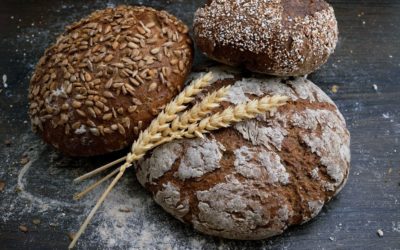Based on mechanistic and epidemiological data. we raise the question of the relation shin between qualitative dietary Dolvunsaturated fatty acids (PUFA) changes and increase in obesity. In this double-blind trial. we studied the effects on 160 overweight volunteers (body mass index. BMI >30) of a 90 days experimental diet rich DrinciDallv in animal fat with a low PUFA/saturated fatty acid (SFA) ratio but a low n-6/n-3 ratio. using animal products obtained from linseed-fed animals. The control diet provided less animal fat. a higher PUFA/SFA ratio and a higher n-6/n-3 ratio. Both diets excluded seafood. In the experimental QI’OUD. we observed a significant increase in red blood cell (RBC) oc-linolenic acid content and a slight increase in EPA and DHA derivatives. while in the control QI’OUD we observed a significant reduction in EPA and DHA content. Between groups now. the difference in the three n-3 fatty acids changes in RBC was significant. This demonstrates that plasma EPA and DHA levels can be maintained without fish if products from linseed-fed animals are used. During the diets. we noted a significant reduction in weight. BMI and hit) circumference within both groups of volunteers. However. no significant difference was observed between the control QI’OUD and the experimental QI’OUD. Interestingly. 150 days after the end of the trial (i.e.. daV 240). we noted a significant weight gain in the control QI’OUD. whereas no significant weight gain was observed in the experimental QI’OUD. This was also observed for the BMI and hit) circumference. Moreover. significant differences in BMI (P < 0.05) and weight (P = 0.05) an neared between the two groups. showing in both cases a smaller increase in the experimental QI’OUD. During the 90 days trial. we did not observe anV differences between groups in terms of total cholesterol. HDL cholesterol. LDL cholesterol or triglycerides. suggesting that the saturate content and the P/S ratio are not as important as the n-6 and n-3 fatty acid composition.
Kevwords: n-3 FattV acids, Linseed, Red blood cell, FattV acid composition, Obese
By: Philinne Legrand, B. Schmitt, J. Mourot, D. Catheline, G. Chesneau, M. Mireaux, N. Kerhoas, P. Weill






 Home
Home

